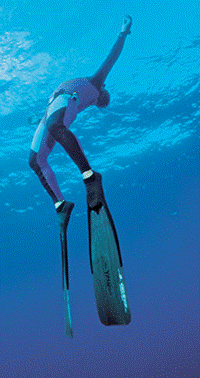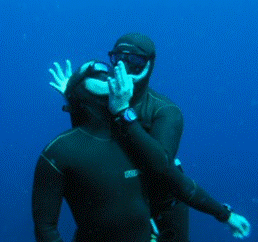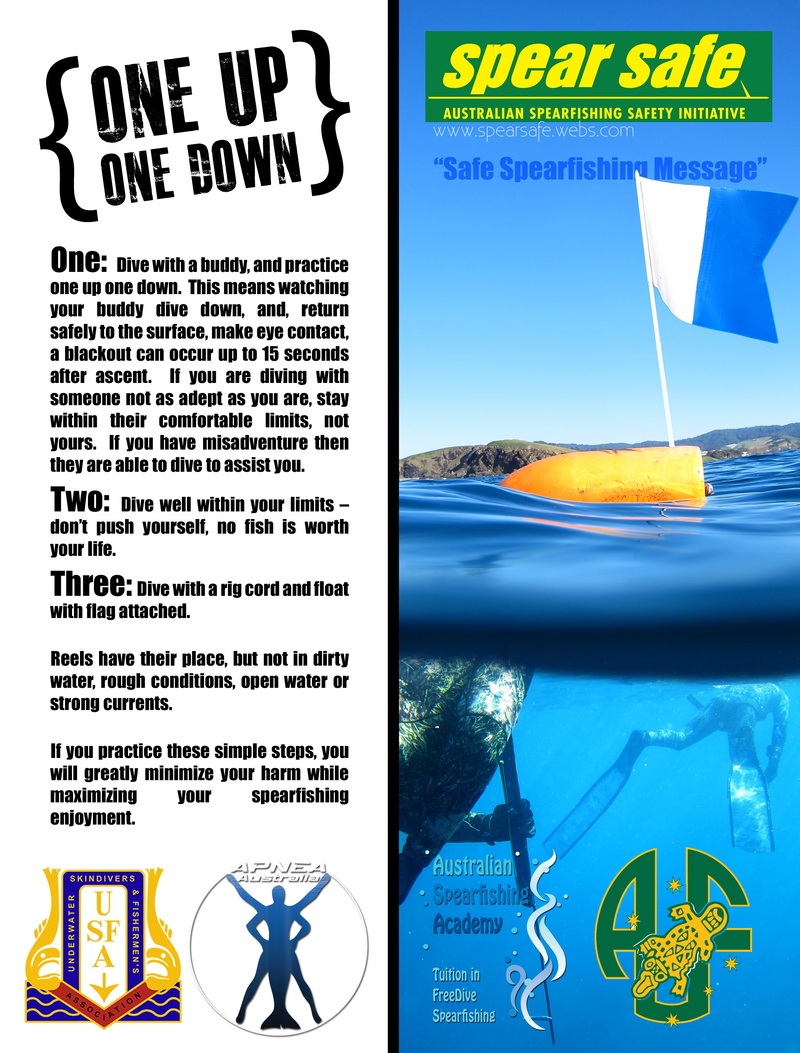The following are all considered effective techniques that can be used to manage the risk of blackout by avoiding/surviving a blackout. The likelihood of blackout is real and increased by not following these techniques. The consequences of a blackout can be serious injury or death. In the event of a blackout these techniques can minimise the risk of injury or death.
The following it used with permission from DIVEWISE:-
Buddy Up
Never dive alone. Dive in buddy pairs, one up and one down.
Maintain direct supervision for at least 30 seconds after a diver has surfaced.
Choose a dive partner with a comparable skill level to your own.
Weight Properly
In deeper water weight for neutral buoyancy at 10 metres. This increases the chances you will float to the surface in the event of a blackout and have a much greater chance of surviving through a timely rescue.
If you ever feel at risk of blackout OR you are involved in a rescue, immediately ditch your weight belt.
Take Your Time
Rest at the surface twice as long as your dive time allowing blood oxygen and carbon dioxide to reach equilibrium.
If you experience blackout and/or hypoxic symptoms (bluish lips or skin, loss of motor control, euphoria, etc.) stop diving for the day.
Breathe absolutely normally to allow the body to dictate the rate of breathing to make sure the carbon dioxide levels are properly calibrated.
If excited or anxious take extra care to remain calm and breathe naturally – adrenaline can cause hyperventilation without the diver knowing.
Breathe sensibly – DO NOT hyperventilate
Avoid hyperventilating by taking no more than 2-3 deep breaths before a dive – anything more than this can critically lower your CO2 level.
CO2 build-up in a breath-hold creates the trigger that tells the body it is time to breathe
Surface before the urge to breath. If the urge to breathe comes on immediately return to the surface.
Be Prepared
Know basic CPR and how to handle a marine-based emergency.
“Practical Safety for Modern Freediving” by Wayne Judge
An article by Wayne Judge covering among other things practical freediving recovery techniques.

Click here to read the chapter on Blackout by Terry Maas from his book Blue Water Hunting & Freediving (image courtesy Terry Maas – http://www.freedive.net/)


